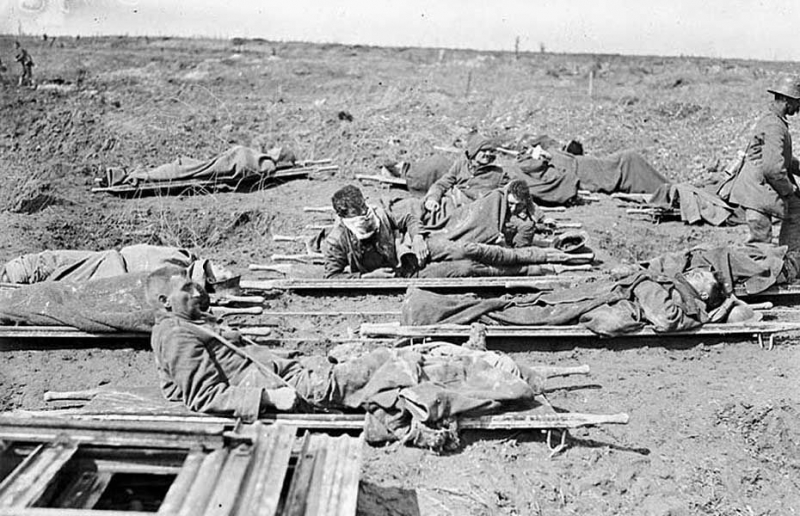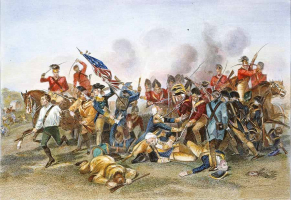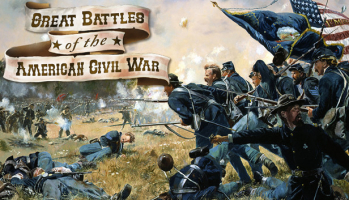Top 5 Facts About Civil War Photography
The potential to document combat occurrences in order to increase public awareness was first investigated with the discovery of photography in the 1830s. One ... read more...of the first historical turning points was the American Civil War. Instead of using words to tell history, people now utilize cameras to more broadly summarize what happened throughout the event. Here are some interesting facts about Civil War photography.
-
The Civil War increased demand for photography dramatically. It was utilized by both the Union and Confederate forces, as well as by normal Americans who desired pictures of their loved ones in peril and of the actual war scenes. Photographing armed war includes capturing its consequences on people, places, and culture. Photographers who work in this field may put themselves in danger and are occasionally killed while attempting to remove their images from the battlefield.
The ambrotype, an image on glass, and the tintype, an image on an iron plate, were both widely used distribution methods for photographs during the American Civil War. The carte de Visita, a portrait adhered to paper stock, was also quite popular. The photographic industry had become extremely professional by the Civil War. The daguerreotype, the first commercially successful type of photography introduced to America by Samuel Morse, was taken up by Mathew Brady early on. He was the first photojournalist when the Civil War broke out.

Source: Pinterest 
Source: York University -
Wet-plate photography was the style of photography utilized during the American Civil War. It took a lot of time and effort to take the pictures. Photographers had to bring a cart with all of their bulky equipment, including a mobile darkroom, to the battleground. On the battlefield, the cameras were bulky and challenging to maneuver. Collodion was the name of the mixture of chemicals employed in the process. This mixture required manual mixing of hazardous substances like sulfuric acid, acetic acid, and ethyl ether.
The process of taking a snapshot involved numerous steps. The photographer set up and focused the camera first. He combined the substances next. A piece of plate glass was then treated with the chemicals to make it light-sensitive. The plate was then transported into a dimly lit area and submerged in silver nitrate. The plate was introduced into the camera after being sealed inside of a container. The photographer then opened the camera's cap for two to three seconds so that it could be exposed to light and the plate could be imprinted with the image. The plate glass was placed in a bath of pyrogallic acid after the cap was restored and while still in its light-tight container.
These cameras also taught photographers how to create complex 3D photographs, or "stereo views." Twin lenses were positioned on the same object at various angles to provide stereo view images.

Source: sonofthesouth.net 
Source: Daily Express -
Everyone wants to be a part of the historical remnants and enjoy their photos through cutting-edge technology, which makes sense given how much both Civil War soldiers and citizens enjoyed having their portraits taken. most modern. Before leaving for the war, some recruits had their portraits taken at neighborhood photo studios because they thought it may be the last time their faces would be recognized by loved ones. Others might have wished to compile an album of recollections for later.
Portrait photography remained highly popular among men throughout the war, and soon the military assigned or permitted civilian photographers into the camp. Because they are less expensive, regular soldiers frequently appear in the same shape in ambrotypes or tintypes. Due to the constant hazards and threats that photographers faced throughout the war, as well as the high costs associated with producing photos at the time, only a small number of photographs were ever produced. There are several pictures that have been kept for the time being.

Source: Pinterest 
Source: Daily Express -
Photographs of dying soldiers during the Civil War are among the most powerful images ever captured. These images, though, only make up a minor portion of all the Civil War documentary images. Alexander Gardner took 20 images of troops who died at Antietam, changing conceptions of the Civil Fighting and battle in general as romantic notions. Approximately 103 photographs of dead soldiers were taken during the war. Grotesque, brilliant images of young guys lying face down on the ground have an impact on civil conflict.
An article from 1900 describes a photographer who captured images of Civil War troops who perished after engagements. Three days after the fight known by the same name, which is regarded as one of the deadliest days of the Civil War with over 22,000 casualties, the photographer paid a visit to the Antietam battlefield in one of his macabre expeditions. There are plenty of dead bodies to shoot on the battlefield. He claimed that for 50 cents to a $1 each, the pictures were a runaway success. In less than two weeks, he was carrying close to $2,000 in his pocket.

Source: pinterest.com 
Source: York University -
Some people would imagine that 3-D technology is a 21st century breakthrough given the recent success of films like Thor and Avatar, but it is actually 19th century and, in fact, as old as photography itself. Understanding visual perception, particularly as it involved understanding how individuals perceive depth, binocular vision also changed throughout the 1830s, a time of upheaval in the science of photography. The first stereo or 3-D images were made in 1839, which is also known as the year realistic photography was invented. When Thomas Edison experimented with stereoscopic projection in 1891, the same year Edison's lab revealed the Cinema Meter, even 3D film was an antiquated idea.
Stereoscopic images, or 19th-century holograms, made up over 70% of the Civil War-era pictures. The same image was taken from slightly different angles, just like our eyes, using a dual-lens camera with holograms to create stereoscopic views. The lenses were separated by the width of the eye. These two images are put in a viewing device after being developed and labeled so that they appear to be seen in 3D, giving the soldiers a special, immersive experience. both soldiers and civilians.

Source: sonofthesouth.net 
Source: Pinterest


























